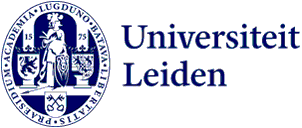
NWO Grant for Research into the History of Languages: ‘It tells us something about our past as humans’
A collaboration between linguists, geographers and anthropologists aims to uncover how languages spread across South America over thousands of years. Associate Professor Rik van Gijn is responsible for the linguistic side of this NWO project.
‘If you look at the distribution of language families across the world, you’ll see that it’s very uneven,’ Van Gijn says. ‘In Europe, we’re left with just a handful of language families, whereas in South America there are over a hundred, including many families with just one member—so-called isolates. To be fair, South America is considerably larger than Europe, but the difference is still striking.’
Linguists have long suspected that the environment plays a significant role in the development and spread of languages. ‘Differences in elevation can make it harder for a language to spread from one community to another, just as variations in soil type and climate can,’ Van Gijn explains. ‘If your livelihood depends on agriculture, you can’t simply move to a different ecological zone. As a result, the language tends to stay in one place, whereas, for example, a river can both hinder and facilitate migrations. It can be a huge barrier, but can also act as a kind of highway.’
Mapping the interaction
In the NWO L project, Van Gijn is collaborating with geographers from Utrecht University and an anthropologist from the University of Groningen to create a model that maps the interaction between language groups and their biophysical environment. ‘In Utrecht, they will use what’s called an agent-based model. This allows us to test various assumptions and probabilities regarding the evolution of linguistic diversity. How likely is it, for instance, that a linguistic feature spreads from one language to another through contact?’
Three case studies
The results of this model can then be compared with actual linguistic variation, as observed by Van Gijn and other linguists. ‘The idea is to create a feedback loop so that the model keeps improving, and we gain a better understanding of the linguistic history of the continent,’ says Van Gijn. ‘We’re focusing on three case studies. In the first, we compare a language family that likely expanded through migration with one that spread through diffusion, for example, through intermarriage between members of different language families, or through groups adopting the language of expanding communities. The hypothesis is that a language spreading through diffusion is less hindered by natural barriers but also becomes more diverse in its features.’
‘We’ll also examine two population groups: so-called river groups and interfluvial groups. The river groups move frequently along the rivers, while the interfluvial groups live in areas between the major rivers and mainly move over land, which presumably gives them a smaller range than the river groups.’
‘Finally, we’ll compare three regions that are highly diverse in terms of language families, but where we don’t immediately see a geographical correlation for that diversity. One of the common ideas about these regions is that they might have experienced a form of political equilibrium, with various interactions between small groups, accompanied by a kind of social contract in which different groups maintained their own identity and language while respecting those of others.’
Excellent case studies
‘These are excellent case studies to explore the extent to which geography has contributed to the development of these super-diverse areas, and what has been more influenced by human decisions. We certainly don’t believe that geography determines everything, but we don’t yet fully understand how the balance plays out. What kind of journey have languages made across the continent? And what does that tell us about ourselves and human behaviour?’
